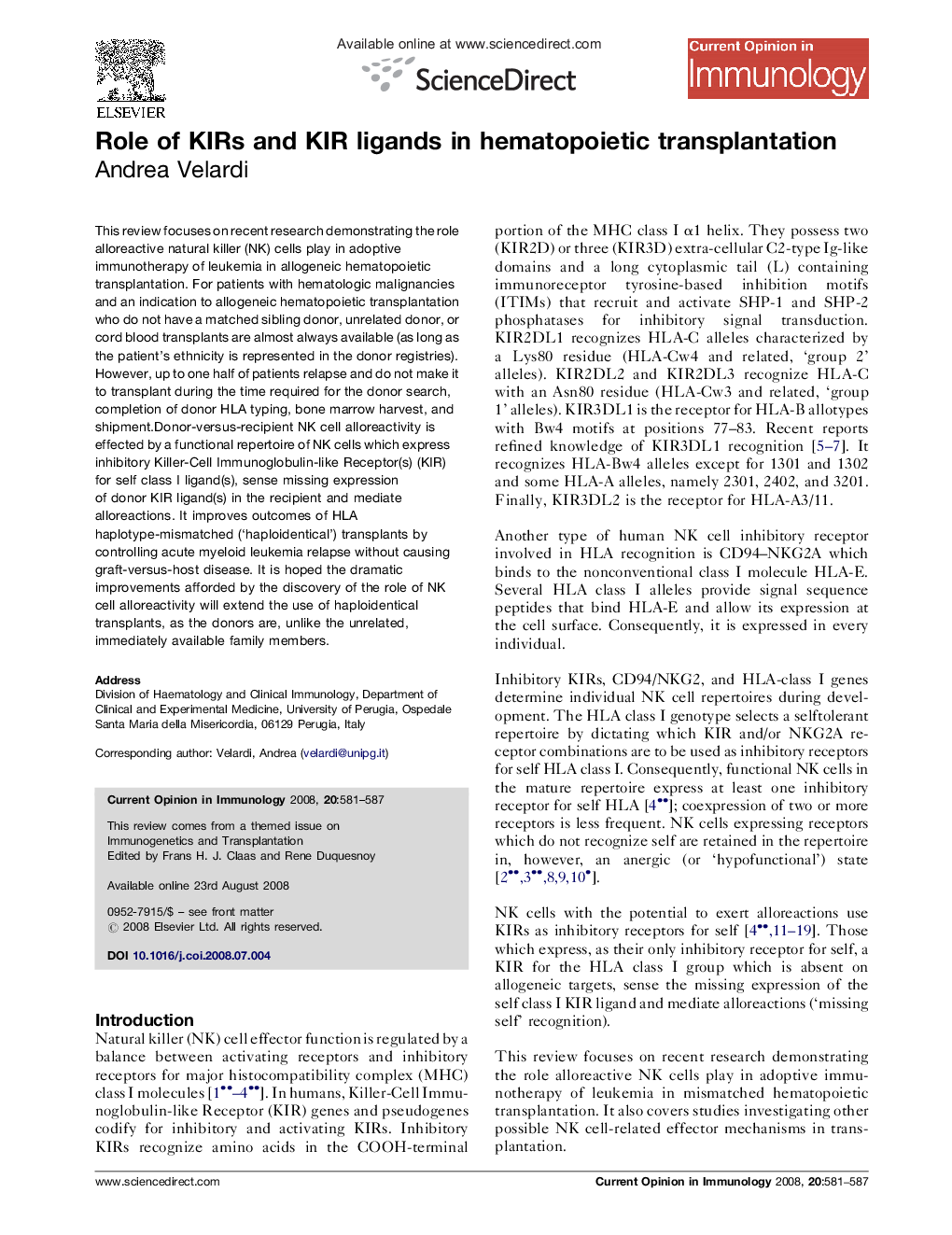| کد مقاله | کد نشریه | سال انتشار | مقاله انگلیسی | نسخه تمام متن |
|---|---|---|---|---|
| 3346377 | 1215783 | 2008 | 7 صفحه PDF | دانلود رایگان |

This review focuses on recent research demonstrating the role alloreactive natural killer (NK) cells play in adoptive immunotherapy of leukemia in allogeneic hematopoietic transplantation. For patients with hematologic malignancies and an indication to allogeneic hematopoietic transplantation who do not have a matched sibling donor, unrelated donor, or cord blood transplants are almost always available (as long as the patient's ethnicity is represented in the donor registries). However, up to one half of patients relapse and do not make it to transplant during the time required for the donor search, completion of donor HLA typing, bone marrow harvest, and shipment.Donor-versus-recipient NK cell alloreactivity is effected by a functional repertoire of NK cells which express inhibitory Killer-Cell Immunoglobulin-like Receptor(s) (KIR) for self class I ligand(s), sense missing expression of donor KIR ligand(s) in the recipient and mediate alloreactions. It improves outcomes of HLA haplotype-mismatched (‘haploidentical’) transplants by controlling acute myeloid leukemia relapse without causing graft-versus-host disease. It is hoped the dramatic improvements afforded by the discovery of the role of NK cell alloreactivity will extend the use of haploidentical transplants, as the donors are, unlike the unrelated, immediately available family members.
Journal: Current Opinion in Immunology - Volume 20, Issue 5, October 2008, Pages 581–587